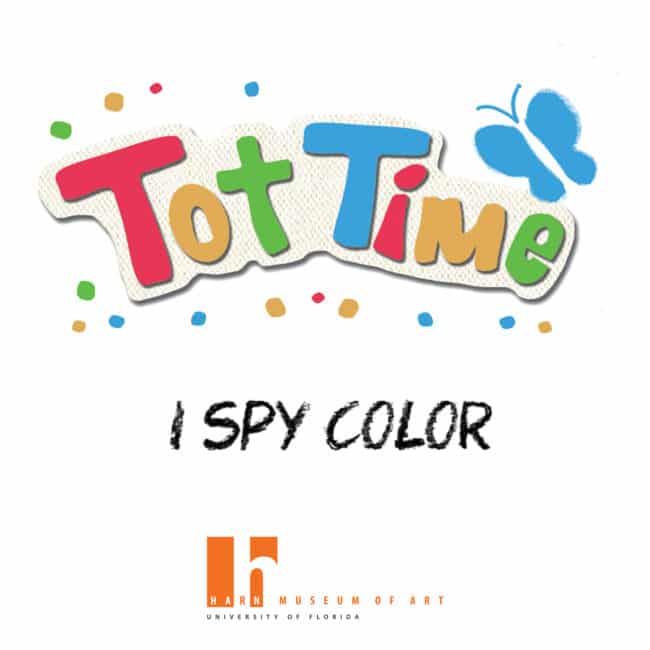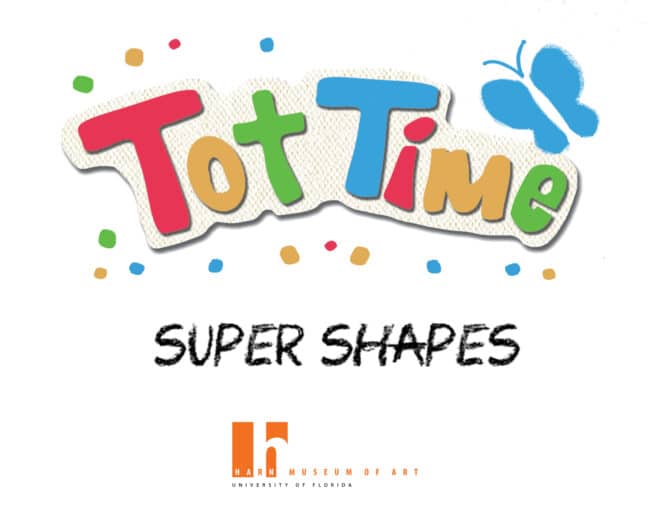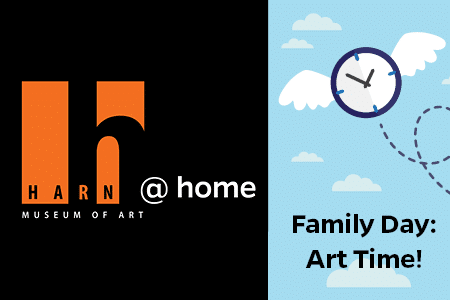Watch the video to explore the relationship between art and music. Then, draw inspiration from Bisrat Shibabaw’s artistic practice to create art that encourages both looking and listening.
What You’ll Need
- A sheet of colorful paper
- Cardstock or other thick paper
- Paint
- Paintbrush or sponge
- Water cup
- Paper towels
- Scissors
- Masking tape
What You’ll Do
1. Choose a noise or song that you like to listen to.
- Tip: Your noise can be found in nature, like birds chirping or ocean waves, or made by a musician, like a song that is lyrical or instrumental.
2. Spend some time listening to your music selection, perhaps repeating the song multiple times. As you listen, let your mind become absorbed in the music. Do colors and shapes come to mind when you listen?
- Tip: Imagine shapes that are geometric, organic, literal or abstract.
- Tip: Imagine colors that are bright, dark, bold or pastel.
3. With a pair of scissors, cut a variety of shapes out of cardstock or other thick paper.
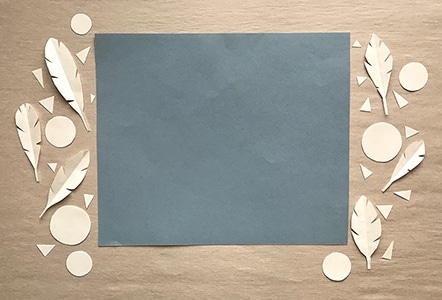
4. While listening to your selected song, arrange the shapes on a colored piece of paper. Does the song influence the placement of your shapes? How can the size and arrangement of the shapes convey movement?

5. Attach a small piece of masking tape to the underside of each shape to hold it in place on the colored piece of paper.
6. With a dry brush or sponge, lightly apply paint over the shapes and onto the paper. Consider the colors that your song inspires.
- Tip: Dab your brush or sponge on a piece of scrap paper to remove excess paint before painting over the shapes.
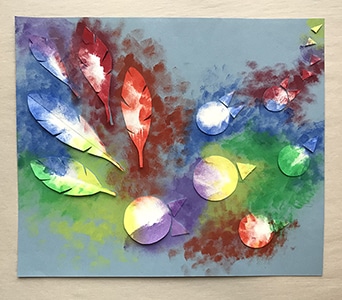
7. Once the paint is dry, carefully remove the shapes and tape off the paper to reveal the silhouettes of the shapes.
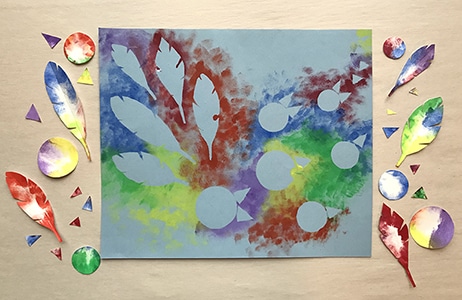
8. While playing your music choice in the background, admire your artwork and see how the music brings the shapes to life.
- How does the music affect your viewing experience of your artwork?
- Do the colors, shapes and design of your painting complement or conflict with your song of choice?
- How does the music influence the mood of the artwork? How does your artwork influence the mood of the music?
Try This!
- Shibabaw uses round, rather than traditional rectangular, canvases in Moonlight Sonata. Try repeating this activity with the colored piece of paper cut into a shape inspired by your song.
- You can reuse your paper shapes by simply painting over the existing dry paint. You can also reuse the shapes by collaging them onto a piece of paper.
- Visit the Harn and find another artwork that you like. What song do you think would pair well with that artwork? How can music enhance or change the meaning of the artwork?
Object Connection
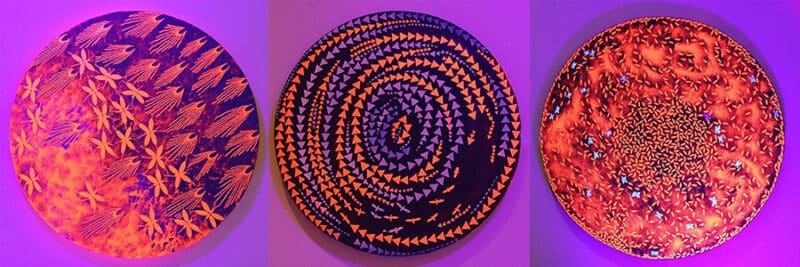
Combining light, color and music, this multi-sensory work showcases the artistic excellence of Ethiopian artist Bisrat Shibabaw. Moonlight Sonata consists of three round canvases of different sizes that depict night skies filled with silhouettes of swarming insects, shooting stars and interlaced tree branches. Geometric and organic shapes cluster, disperse and align to convey rhythmic movement within each of the circular fields. The shapes dance to Beethoven’s Moonlight Sonata, which plays in the background and lures in viewers. The canvases glow off the wall as black lights shine onto the three compositions, illuminating vibrant colors of red-orange and blue. Drawing inspiration from natural phenomena, folklore, fairy tales and the European classical music she listens to while working, Shibabaw composed Moonlight Sonata with attention to light versus dark, chaos versus order and visual versus auditory to create an eye-catching work of art.
Lesson Plan by Sarah Bass, Family Programs Intern & 4th-year Art and Art History major in UF’s College of Art School of Art and Art History.

